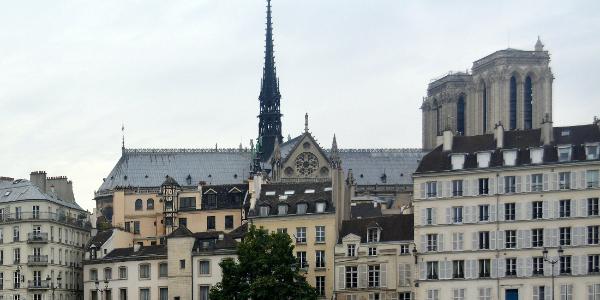Rebuilding History With Medieval Tools

By Dani Sheehan.
After the roof of Notre Dame was ravaged by fire, these skilled carpenters committed to preserving the history of the cathedral by employing medieval techniques.
After a truly monumental building caught fire, the carpenters reconstructing the roof of the Notre Dame Cathedral are going to extra lengths to use medieval-era skills for the restoration. Two-thirds of the wooden roof, originally built from 5,000 oak trees, were destroyed April 15, 2019, in a fire of unknown causes.
An 850-year-old gothic cathedral, the fire had not yet been extinguished when plans were made for its reconstruction. Wanting to pay homage to their predecessors in the 13th century, the carpenters made a very deliberate choice to use hand tools rather than power tools. They are quite literally using mallets on chisel, as if rewinding time, and handcrafting each and every joint.
This historic building has found a way to connect the past and the present, using the same material, the same tools and the same woodworking skill. Due to the tight deadline for this project, computer technology is aiding architects and carpenters to ensure the beams will fit nicely together but the precision and craftsmanship is entirely hand fashioned. At the time Notre Dame was built, architects were pushing the limits of their own technology, working to make buildings taller and with more windows. The original plan called for much thicker walls, but over the nearly 200 years of construction, they discovered flying buttresses could help support the incredible stained-glass windows and vaulted ceiling.
The latticed wooden structure of beams and supports is known to historians as the forest, and over 1,200 trees have been felled for the reconstruction. After four years, the first of the reconstructed wooden triangles was delivered by ship and lifted to the cathedral roof. This is only the dry run, however. Removable metal pins connect the trusses for easy transportation, but when final, Notre Dame’s roof will not have a single piece of metal holding it together. In the spirit of medieval restoration, permanent wooden mortise and tenon joints will be used.
Working towards a reopening of December 2024, this recent progress of the project inspires hope among Parisiens. As Victor Hugo described the cathedral, “Every face, every stone, of this venerable monument, is a page not only of the history of the country, but of the history of science and art.”
Stay up to date with the latest industry news when you sign up for the Coffee Shop eNews.
About Dani
Dani is a writer for The Coffee Shops and AskARoofer™. When she's not writing or researching, she's teaching yoga classes or exploring new hiking trails.





















Comments
Leave a Reply
Have an account? Login to leave a comment!
Sign In